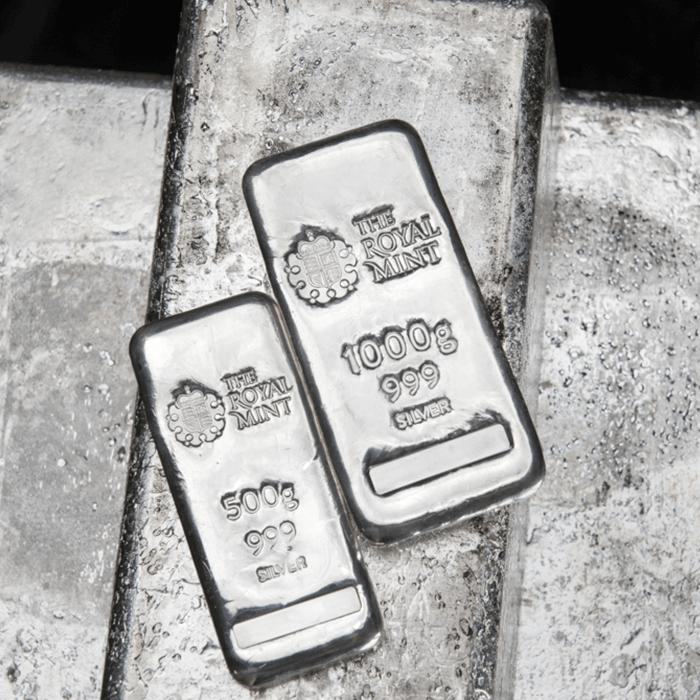![Web Desktop Hero Banner [1600×800] 21.png](/globalassets/bullion/_new_structure/discover-bullion/guides/market-updates-2023/may/web-desktop-hero-banner-1600800-21.png)
Precious Metal Prices
The price of gold has so far proved volatile during May, beginning at $1980.90 and peaking at $2044.70 on May 4 before dipping to $2015.30 by May 15. The price has been affected by several factors, notably a resurgence in Chinese demand for gold. In addition, the US Federal Reserve recently raised its key interest rate but hinted at the possibility of pausing future rate hikes to assess their impact on growth and inflation, citing concerns about the banking sector. The potential for further rate hikes and a US economic slowdown has put pressure on gold prices.
Other precious metals also saw reasonable price movements throughout the start of May, with silver rising from an opening price of $24.77 to a high of $25.84 towards the end of the first week. However, unlike gold – which still sits above its opening position – silver had declined to $23.89 by May 15, a decrease of more than 3.5%.
Silver Demand
The latest issue of Silver News from the Silver Institute reported that during 2022, all major silver groups saw high demand, resulting in a global record of 1.24bn oz. Industrial demand, which makes up nearly half of all silver usage, increased by five percent, whilst physical silver investment and jewellery rose significantly. However, more recently silver prices have come under pressure as China's industrial production data fell below expectations, and the gold/silver ratio reached its highest level since March.
Indian Gold Imports
India's gold demand faced a significant decline in the first quarter of 2023, dropping by 17% to 112.5 tonnes compared to the same period in 2022. The decrease was primarily attributed to the record-high prices and market volatility of the yellow metal. Jewellery demand in India also hit a six-year low, decreasing by 17% to 78 tonnes. In value terms, gold demand was down nine percent and, additionally, gold imports in April plummeted by 45% to a three-month low of 16 tonnes. Multiple factors, including price sensitivity and fewer auspicious days, have caused Indian households to defer gold purchases in anticipation of a price correction.
![Article Secondary Image [1000 x 500] 15.png](/globalassets/bullion/_new_structure/discover-bullion/guides/market-updates-2023/may/article-secondary-image-1000-x-500-15.png)
Central Banks
Latest data from the World Gold Council showed that central banks are continuing their gold-buying spree, purchasing 228 tonnes in Q1 2023 and contributing to higher gold prices. In March, global central bank gold reserves remained stable, with China adding 18 tonnes for the fifth consecutive month, Singapore increasing by 17 tonnes, and India and the Czech Republic reporting modest increases. Türkiye, Uzbekistan, and Kazakhstan were the primary sellers, with Türkiye selling 15 tonnes. Russia was said to have experienced a three-tonne decline in reserves; however, data from the region is still said to be unverified. The Q1 gold purchases by central banks and institutions amounted to a significant 176% year-on-year increase, reflecting a shift away from the US dollar and a growing demand for gold as an investment.
Russian Gold Production Surges
Russian gold production surged by 26.5% year on year in March, with a more than 30% increase compared to the previous month. Silver, platinum, and palladium production also rose by 14.1% in March. Concurrently, Russia's bullion stockpile grew by one million ounces to 74.9moz, reflecting ongoing efforts to diversify foreign currency reserves and reduce dependence on the US dollar. Russian demand for investment gold bullion exceeded 75 tons in 2022, driven by global economic uncertainty and the perceived stability of gold. With Western sanctions restricting access to Western markets, smaller logistics firms and merchants have stepped in to facilitate the Russian gold trade, diverting supplies to destinations such as the UAE, Hong Kong, and Turkey. This shift in trade routes reflects the broader rerouting of global commodities trade in response to the Ukrainian conflict and sanctions.
Platinum Demand
Global demand for platinum is expected to surge by 28% this year compared to 2022, whilst supply is projected to decrease by one percent year on year, resulting in a near one million ounce deficit. The World Platinum Investment Council (WPIC) predicts that the previously anticipated platinum shortage will be worse than initially expected, driven by increased demand, particularly from the industrial sector. A recent WPIC report states that the platinum deficit for 2023 is estimated to be around 983,000 ounces, which is a 77% upward revision from its previous forecast. The report highlighted strong industrial demand, particularly in China, as well as continued demand in the automotive sector, where platinum is increasingly used as a cost-effective substitute for palladium in catalytic converters.
![Article Tertiary Image [1000 x 500] 4.png](/globalassets/bullion/_new_structure/discover-bullion/guides/market-updates-2023/may/article-tertiary-image-1000-x-500-4.png)
First King Charles III Coins Pass The Trial of the Pyx
The Trial of the Pyx, one of the UK's oldest judicial processes, has concluded with a positive verdict on the first official UK coins from The Royal Mint featuring the first coinage portrait of King Charles III. Nearly 10,000 coins – including a 15kg gold coin – were tested in this year's trial, which marked a historic moment as coins bearing the effigies of two monarchs were submitted simultaneously for the first time in decades. The Trial of the Pyx, dating back to the twelfth century, ensures the quality and accuracy of the nation's coinage, with a jury of goldsmiths confirming that the coins met regulatory standards.




